![]()
12 april 2007:
"Verder zit er een beetje sluierbewolking.
Nou, daar letten we verder niet op."
Meteorologists rather ignore and even deny the effects of airtrafic on our sunlight, weather and climate. The Dutch word for 'veil' is 'sluier'. In Holland the popular name for cirrus (veil-like clouds at high altitude) is 'sluierwolken' or 'sluierbewolking'. Contrails (condensation trails) that aircraft produce at heights of 9 to 13 kilometer, weave a web of cirrus clouds around the world. Their shape and thickness depend on atmospheric conditions, but even when contrails seem to 'disappear', the exhaust fumes (and their effects) are always there! Whatever the appearences of contrails and aviation cirrus, meteorologists always call them 'sluierwolken' (veilshaped clouds), making the public believe the origin of this kind of high smog is natural and not human.
Luchtvaartsmog
bederft ons zonlicht, het weer en het klimaat, wereldwijd.
(Aviationsmog spoils our sunlight, weather and climate, worldwide.)
|
|
|
|
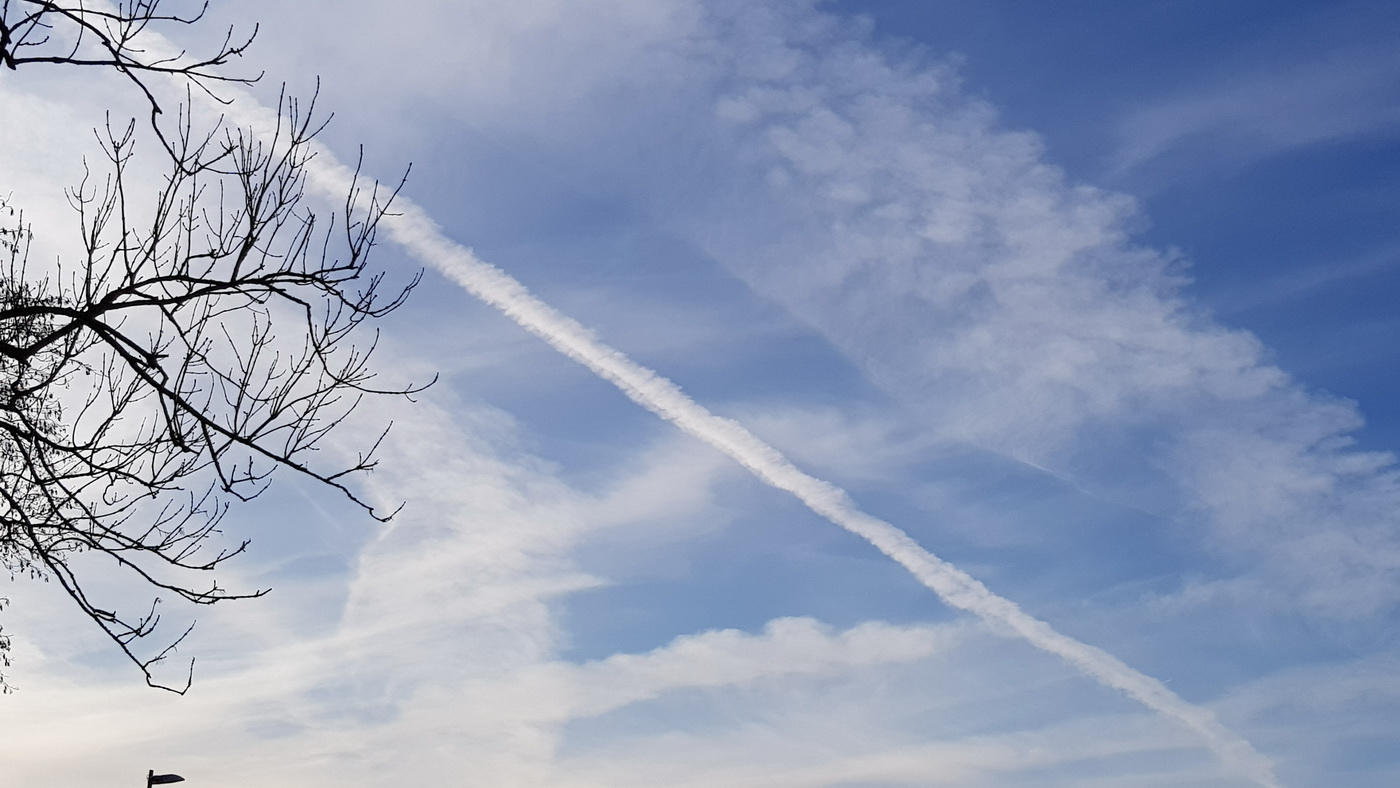 2018 |
 2019 |
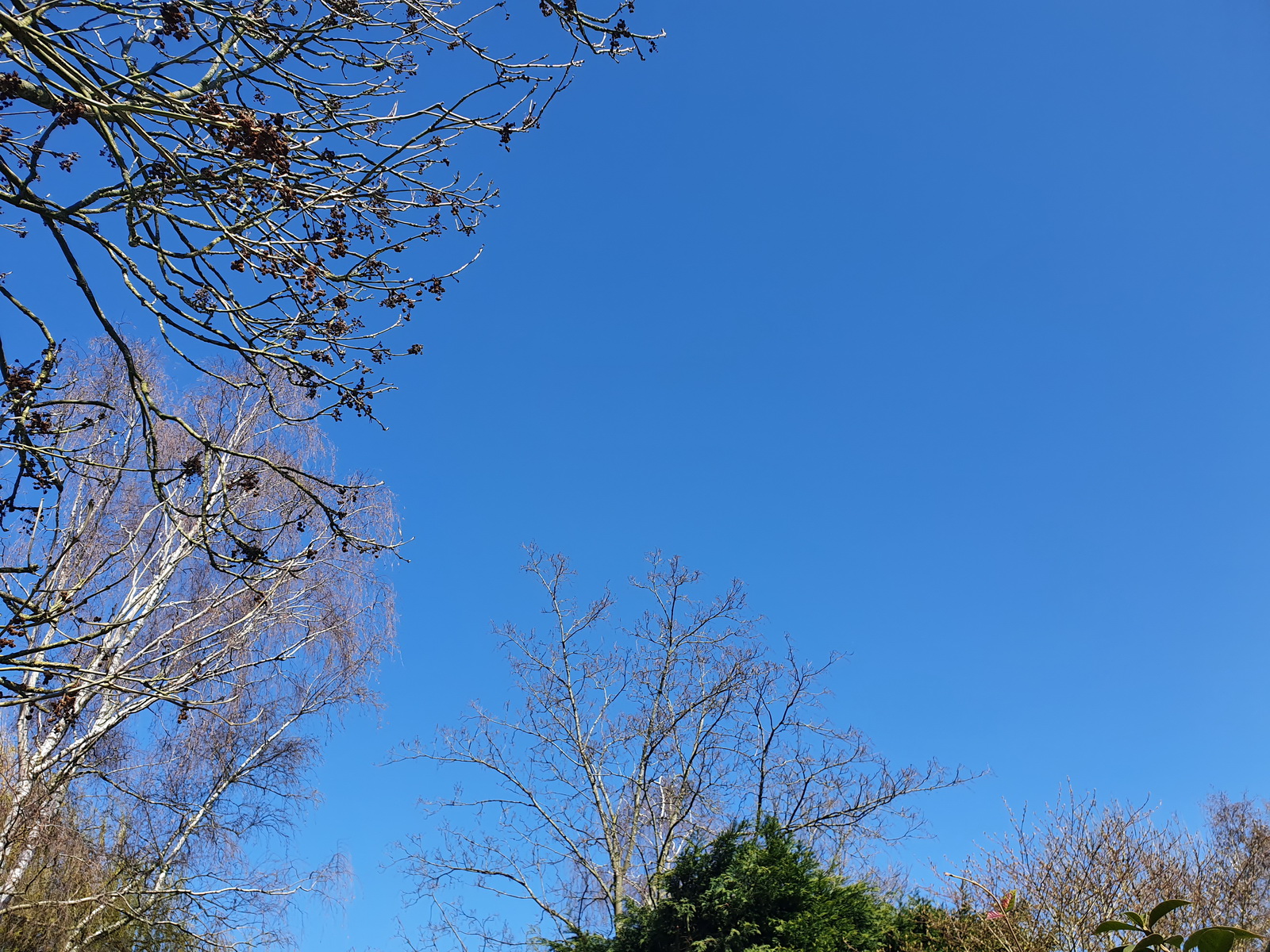 2020 |
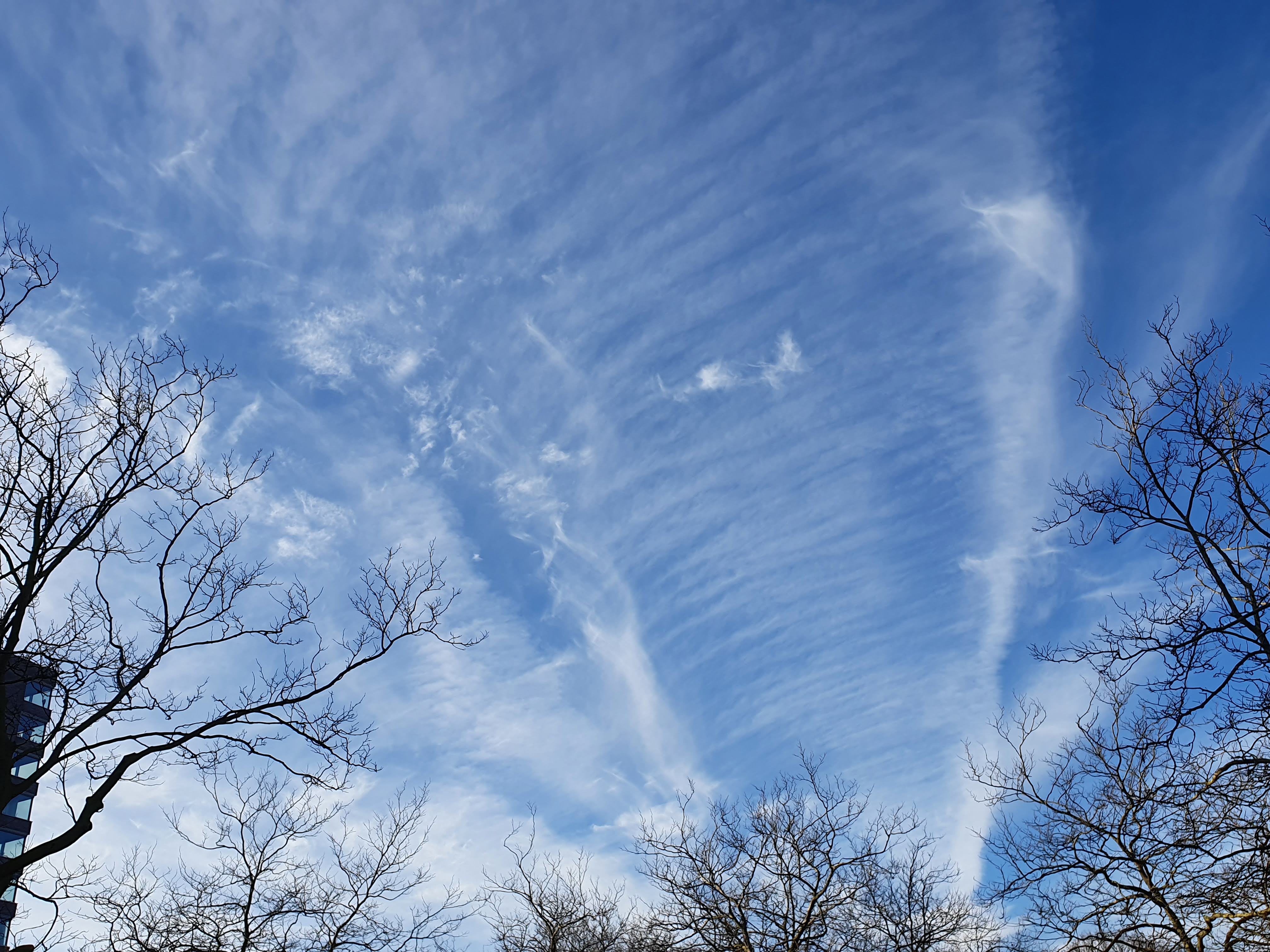 2021 |
||
|
2014 |
2015 |
 2016 |
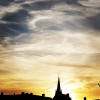 2017 |
||
|
2010 |
2011 |
2012 |
2013 |
||
 2006 |

2007 |
 2008 |

2009 |
||
 2002 |
 2003 |
 2004 |
 2005 |
||
 1995-1999 |
 2000 |
 2001 |
|||
 Contrails = Aviationsmog Selection |
 Weerkundigen versluieren luchtvaartsmog: #Weerleugens |
||||

|

|
||||
|
Stelling: hagelstenen worden groter door luchtvaartsmog. Aviation-smog makes hailstones bigger. 'Vliegtuigstrepen, een prachtig gezicht!' (NOS-weerman op op 6 januari 2015.) The word Contrail stems from 'condensation' and 'trail'. Aviationsmog (that's what it really is) is caused by airtraffic at great heights. Each day, jetengines of airplanes dump vast amounts of water (ice), CO2, soot particles (condensation nuclei), aerosols and chemical substances. Airtraffic thus not only alters the properties of the higher regions of our troposphere but also all the regions below, right down to groundlevel. This extra layer of man-made high-altitude smog probably infuences weather, climate and the quality and quantity of the sun's radiation that reaches the surface of Earth ('global dimming.'). Aviation-smog is responsible for more clouds, rain, drought, bigger hailstones (megacryometeors), a stronger greenhouse effect (global warming), and, maybe, even gives extra power to hurricanes. Still, aviation-smog does not get the scientific and political attention it deserves. After so amny years, some links on the pages of https://www.contrails-research/index.htm are no longer valid, alas. Meteorologists ignore contrails and aviationsmog, and their effect on sunlight, weather and climate. They rather veil the 'inconvenient truth' that aviation
is bad for our climate. 'Contrails do not cause rain or hinder the sun, so they are not worth mentioning'
"Geachte Robert van Waning, |
|||||
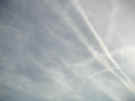 |
|||||
|
"Beautiful weather today, with a full sunshine. There are some high veilclouds, but they are thin, so the sun can easily shine through them," (Public Broadcast NOS, May 26th, 2005.) The picture above shows the reality: Aviation smog covered the sky that, without aviation, would have been cloudless and blue. Meteorologists rather ignore facts that are bad for their business. ("Het blijft vandaag schitterend weer. De zon schijnt volop. Er is wat sluierbewolking, maar die is dun, zodat de zon daar gemakkelijk doorheen schijnt." (NOS Radio 1 Journaal, 26/5, 12:30 uur)) |
|||||
 |
|||||
|
"Strak blauw is de hemel niet, want zo nu en dan trekken er hoge sluierwolken voorbij. "De zon heeft hier echter geen last van." (NOS Radio 1 Journaal, 20 februari 2004.) Op Meteologica.nl kunt u zien hoe de lucht er in werkelijkheid uitzag: vol luchtvaartsmog. "Er was vandaag nauwelijks bewolking te vinden." (Marjon de Hond, NOS Journaal, 17 oktober 2006.) |
|||||

|
|||||
|
'Some veilclouds. They're not worth noticing.' |
'Here we only see some high veil clouds..'
|
||||
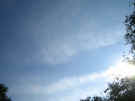
Zondag 4 september 2005, 15:13 uur. |
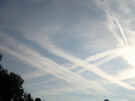
Maandag 5 september 2005, 09:11 uur. |
||||
|
"De zon schijnt voluit. Alleen wat dunne sluierwolken sieren de hemel," zegt de weerdame van NOS Radio 1 Journaal
op zondag 4 sept. 2005, 08:30 uur.
Kennelijk houden weerkundigen wel van die slierten vliegtuigsmog
en van de fletse kleur die zij aan de hemel geven. |
"Eerst komt er nauwelijks
bewolking voor," |
||||
 Zaterdag 9 september 2006, 12:19 uur, in Gent (Belgi�), zuidwest van Nederland |
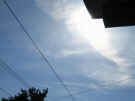 Zondag 9 september 2006, 16:20 uur, in Amsterdam. |
||||
|
"Vanmiddag en vanavond schuift er vanuit het zuidwesten wel wat dunne sluierbewolking binnen, maar dat mag geen naam hebben." |
"Morgen (10/9) zijn er eerst nog hoge wolkenvelden, zogeheten cirrusbewolking, maar in de loop van de dag wordt het steeds zonniger." |
||||
|
"Een zeer fraaie zonsondergang,
veroorzaakt door hoge sluierbewolking," stond in de "Weeratlas"
bij een foto van luchtvaartsmog. Als weerkundigen luchtvaartsmog niet
willen zien, of het alleen maar 'mooi' en 'sierlijk' noemen, dan hoeven wij van die kant weinig
steun te verwachten voor vermindering van deze ernstige vorm van
luchtvervuiling. De luchtvaartindustrie heeft de meteorologie in haar zak gestopt. En wie een kritische kanttekening plaatst bij een persbericht van het KNMI, kan rekenen op een een
smadelijk artikel van
de Chef van de Wetenschapsredactie van de Volkskrant, Martijn van Calmthout. |
|||||
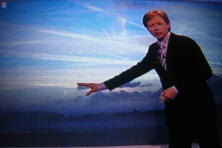
|
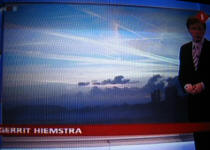
|
||||
|
Weerman Gerrit Hiemstra in het NOS Journaal: "Het weer zag er ook vanmorgen mooi uit. Dat is mooi te zien op deze foto, die vanmorgen in Rockanje werd gemaakt. Een prachtig kleurenspel, en die mistbanken die u ziet, die horen ook echt bij het weertype dat wij hebben en de komende dagen ook zullen houden." (NOS Journaal, 13 oktober 2006, 20:20 uur.) Ook op 15 januari 2007, toen de hemel compleet bedekt was met luchtvaartsmog, zal Gerrit Hiemstra alleen maar 'mooie hoge bewolking die langstrok'. Contrails: Vliegtuigstrepen of luchtvaartsmog?Gelukkig zijn er ook kritische en onafhankelijke weerkundigen voor wie contrails geen verwaarloosbaar verschijnsel is en die openlijk rekening durven houden met de mogelijkheid dat deze ontwikkeling wel degelijk gevolgen kan hebben voor het weer, de zonnestraling die de aard bereikt en uiteindelijk wellicht ook voor het klimaat. Kees Floor, die als weerkundige verbonden was aan het KNMI en die nu o.a. redacteur is van 'Het Weer Magazine', is hier een voorbeeld van. Hij schreef 'Contrails: Vliegtuigstrepen of luchtvaartsmog?' in Het Weer Magazine (2008, nr. 2). The cloud with a dangerous secret Night flights give bigger boost to global warming
Telescopes 'worthless' by 2050.
Are Skies Dimming Over Earth?
|
|||||
 |
Aviation Smog is a global problem 'Dear Robert, I came across your excellent website today, after my sunbathing (a rare opportunity) was ruined by jets. I was so annoyed, I made a picture gallery of today's sky. Keep up the good work. Best regards, Patrick Taylor. ' |
 |
With contrails and skysmog, aviation shows its ugly face.
Schiphol (Amsterdam Airport) on August 27th, 2005: |
|
|
Il est (encore) temps de reagir. Cette photo satellite a ete prise par une journee sans nuage (d'origine naturelle). |
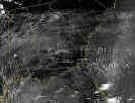
|
NASA's Astronomy Picture of the Day: October 13th, 2004. Artificial clouds made by humans may become so common they change the Earth's climate. The long thin cloud streaks that dominate the above satellite photograph of Georgia are contrails, cirrus clouds created by airplanes. The exhaust of an airplane engine can create a contrail by saturating the surrounding air with extra moisture. The wings of a plane can similarly create contrails by dropping the temperature and causing small ice-crystals to form. Contrails have become more than an oddity - they may be significantly increasing the cloudinss of Earth, reflecting sunlight back into space by day, and heat radiation back to Earth even at night. The effect on climate is a topic of much research. |
|
|
|
Chemtrails?I don't think so. With it's 'normal' and totally accepted cause, aviation smog is bad enough as it is. |
|
|
|
|
|
|
|
 |
My name is Robert C. VanWaning. I was born in New Orleans (U.S.A.), in 1942. That once beautiful city has fallen victim to environmental carelessness and a general underestimation of Nature's forces. My wife and I live in Amstelveen in The Netherlands (Holland). I am not a meteorologist or in any other way an expert in this field, just someone noticing undesirable developments that are generally being ignored by politicians, media and even by meteorologists.. |
|
|
|
|
Contrails zijn vliegtuigstrepen.
"Sluierbewolking" is meestal luchtvaartsmog. Op deze website vindt u o.a.foto's van contrails, die ik sinds 1995 heb genomen. Het kan zijn dat u nog nooit hebt gehoord dat het vliegverkeer bewolking veroorzaakt. Weerkundigen versluieren namelijk liever bewolking die door vliegverkeer wordt veroorzaakt. Wetenschap en journalistiek weten het allemaal nog niet zo zeker. "Ongeforceerd kan het nu verder naar een ander klimaatprobleem waarvoor lezer Robert C. van W. in Amstelveen al vele jaren en in wisselende toonaard aandacht vraagt: de toenemende hoeveelheid vliegtuigsporen aan de hemel. Van W. ziet in de condensstrepen ('contrails'), die op nare dagen makkelijk uitgroeien tot hemelbedekkende sluierbewolking, het bewijs dat het vliegverkeer het klimaat rechtstreeks beinvloedt. Al een jaar of vijf maakt hij foto-opnamen als het weer heel erg is, en het AW-docucentre bezit inmiddels een fraaie collectie. Sinds Van W. het abonnement op NRC Handelsblad beeindigde is de stroom wat verminderd, maar opdrogen zal hij zeker nooit. En Van W. is niet de enige, ook uit de kop van Overijssel komt regelmatig de vraag: wordt dat broeikasgedoe niet te zeer in theoretische sferen getrokken, we kunnen toch gewoon zien dat er door verbranding van fossiele brandstoffen meer wolken ontstaan, dus dat het klimaat verandert. Meer is toch niet nodig?" ('Stralingsforcering', Karel Knip in NRC Handelsblad, 19 sept. 1998)
In het NEWI Meteo Fijnaart: Weerkundig woordenboek vindt u definities en omschrijvingen uit de meteorologie, zoals Aerosol (Ze zijn van grote betekenis in de atmosfeer, waar ze onder meer een belangrijke rol spelen bij de condensatie van waterdamp tot waterdruppels en de vorming van ijskristallen. Aerosolen treden dan op als condensatiekernen.), Contrail, Persistente contrail, Cirrus (Ci) (Vederwolken. Behoort tot de categorie van de hoge wolken (meestal boven de 6km). Cirruswolken vertonen vaak een vezelige, vaak gesluierd uiterlijk. Ze bestaan geheel uit ijskristallen., Cirrostratus, halo's, Cirrocumulus (Cc), Condensatie, Condensatiekernen, Condensatieniveau, Condensatietemperatuur, Condensatiewarmte, Condenseren, Verdampen, In cloud scavenging (De aanwezigheid van polluerende deeltjes in de atmosfeer (o.a. condensatiekernen) binden waterdamp waarna druppeltjes worden gevormd en de wolk 'regent uit'. De lucht wordt 'gereinigd'.),Industriële cumulus (Soms te zien in het Botlek-gebied. Door de uitstoot van warmte en vocht ontstaat op beperkte schaal convectie, waardoor in een overigens strakblauwe hemel alleen boven het industriegebied enkele cumulus-wolken ontstaan. Een enkele keer kan daar zelfs een kleine bui uit vallen.) IJswolk (Wolk waarin alleen maar ijskristalletjes voorkomen. Boven het nulgraden niveau zijn de wolkendruppels in onderkoelde toestand. Hoe lager de temperatuur in de wolk, des te groter de kans dat de onderkoelde waterdruppels bevriezen. Boven een zekere hoogte (niveau) zal al het onder koelde water overgaan in ijs. De temperatuur waarbij dat gebeurt, varieert sterk van wolk tot wolk, namelijk van -15 tot -40 graden Celsius. In de meeste wolken zullen echter bij een temperatuur lager dan -23 graden Celsius alleen maar ijskristallen voorkomen.), IJsdriehoek, Tropopauze (De bovenste begrenzing van de troposfeer. Bevindt zich op een hoogte van circa 15km. Daarboven bevindt zich de Stratosfeer.), Troposfeer (De onderste laag van de dampkring. Boven de polen ong. 8 km dik; boven Nederland (op 52 graden N.B.) ong. 12 km dik en in de tropen ong. 16 km dik.)
Toelichting
en Commentaar,: door Wim
Haenen (oud-leraar milieukunde): The filenames of the pictures contain
dates (yyyymmdd) and times (hh:mm:ss): You are free to use the pictures for legal purposes on the condition that their source is mentioned each time. This collection of contrail-pictures is not at all complete. Contrails and aviation-cirrus (-smog) appear on many more days, but I am not always in the postion to take pictures. Also, under many circumstances this kind of man-made, unnatural cirrus-cloudiness is hardly visible, sometimes because lower clouds block the sight, but often because of little contrast with the milky-blue background of the sky. This whiteness is a result of a high level of moisture (ice-crystals) in the higher regions of our troposphere. Aircraft bring a lot of moisture to these altitudes.. Many links on the pages of https://www.contrails-research/index.htm are no longer valid, alas. |
|
|
Robert C. van Waning Mijn andere websites zijn: Please send your comments and suggestions to info @ this domain. The End | |